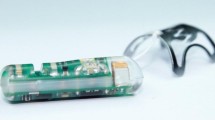Abstract
In the wave of global technological development, artificial intelligence technology is developing very rapidly [1]. Image recognition technology, a core aspect of AI technology, is also becoming more and more popular in people's daily lives [2]. If the healthcare industry takes advantage of the new technology, it will greatly contribute to the development of healthcare services. The global trend towards ageing is evident, and in China, the elderly are often treated with intravenous injections. Currently, venipuncture needle extraction compressions are still performed manually to stop bleeding. However, the compression component is often not valued by healthcare professionals and elderly patients [3]. Chronic geriatric patients also suffer from subcutaneous bruising as a result of their own illnesses and the ageing of their bodies, such as problems with skin laxity and poor vascular elasticity, as well as incorrect methods of compression to stop bleeding [4]. To reduce patient discomfort and improve patient satisfaction with hospital services, it is necessary to design a smart hemostat in conjunction with new technology.
Access this chapter
Tax calculation will be finalised at checkout
Purchases are for personal use only
Similar content being viewed by others
References
Yang, C., Huang, C.: Quantitative mapping of the evolution of AI policy distribution, targets and focuses over three decades in China. Technol. Forecast. Soc. Change 174, 121188 (2022)
Zhang, Z., Zhao, L., Yang, T.: Research on the application of artificial intelligence in image recognition technology. J. Phys.: Conf. Ser. 1992(3), 032118 (2021)
Chen, J., Ye, F., Wu, Y., et al.: Effect of thumb pressing on hemostasis after needle pulling out of intravenous infusion. J. Nurs. 13(9), 93 (2006)
Wang, H.: Analysis of causes and countermeasures of subcutaneous congestion after intravenous infusion in elderly patients with chronic diseases. Health Nutr. 27(12), 288–289 (2017). (in Chinese). https://doi.org/10.3969/j.issn.1004-7484.2017.12.476
Li, X., Huang, X.: Study on the method of removing needle pressure from intravenous infusion. Chin. J. Pract. Nurs. 21(7), 1–3 (2005)
Wu, S.: Design and application of automatic post-intravenous infusion tourniquet set_Wu Su. Contemp. Nurse 28(10), 181–182 (2021)
Qiu, Z.: The production and use of venipuncture needle extraction compression strips. J. Nurs. 21(4), 77–78 (2014)
Production and use of a pressure tourniquet_Liu Yuanyuan
Li, S.: Application of homemade pen-operated venipuncture needle puller to stop bleeding after intravenous infusion needle pulling. J. Bengbu Med. Coll. 44(1), 113–115 (2019)
Hu, S.: Effectiveness of a bullet-type intravenous compression tourniquet in clinical use_12. Contemp. Nurse 27(9), 188–189 (2020)
Jia, S., Wang, Y., Wang, W., Zhang, Q., Zhang, X.: Value of medical imaging artificial intelligence in the diagnosis and treatment of new coronavirus pneumonia. Expert Syst. 39, e12740 (2021). https://doi.org/10.1111/exsy.12740
Artificial Intelligence Versus Clinicians in Disease Diagnosis: Systematic Review-Web of Science Core Collection. https://www-webofscience-com.ezproxy.lib.szu.edu.cn/wos/woscc/full-record/WOS:000488621000012. Accessed 14 Jan 2022
Wu, Y.: Application of voice and image recognition and artificial intelligence in medical industry. Technol. Innov. (9), 157–158 (2018). https://doi.org/10.15913/j.cnki.kjycx.2018.09.157
Qiu, Y.: Application analysis of image recognition technology under artificial intelligence. Comput. Program. Skills Maintenance 37(3), 123–124, 159 (2021)
Zhang, X., Guo, Y.H., Li, G., et al.: Automatic image recognition and annotation for dorsal hand intravenous injection. Infrared Technol. 37(9), 751–755 (2015)
Li, L.: Simulation study of improved finger vein image recognition algorithm. J. Comput. Simul. 28(3), 310–312 (2011)
Jia, X., Xue, D.Y., Cui, J.J., et al.: Algorithm for dorsal hand vein recognition based on chunked ridge wave transform. Pattern Recogn. Artif. Intell. 24(3), 346–352 (2011)
Qian, W.C.: Exploring the application of ergonomics in medical device design. Sci. Tech. Innov. She. 17(15), 62–63 (2020)
Yao, L.B.: Low-illumination CMOS image sensor technology [1]. Infrared Technol. 35(3), 125–132 (2013)
Wang, H., Tao, L., Zhou, J.: Retinex and wavelet decomposition based dorsal hand vein recognition method. Syst. Eng. Theory Pract. 34(2), 428–436 (2014)
Zhou, Y., Liu, Y., Yang, F., et al.: Palm vein recognition based on directional features [3]. Chin. J. Graph. Graph. 19(2), 243–252 (2014)
Gao, G., Dong, X.: Research on the design of wearable health care products for the elderly based on the concept of humanization. Ind. Des. 16, 71–72 (2020)
Tang, X.: Application of ergonomics in the design of medical devices. Jushe 28(36), 171 (2017)
Author information
Authors and Affiliations
Corresponding author
Editor information
Editors and Affiliations
Rights and permissions
Copyright information
© 2022 The Author(s), under exclusive license to Springer Nature Switzerland AG
About this paper
Cite this paper
Fu, M., Luo, J. (2022). Design of an Intelligent Intravenous Infusion Hemostat for Elderly Patients with Chronic Diseases Based on Image Recognition Technology. In: Duffy, V.G. (eds) Digital Human Modeling and Applications in Health, Safety, Ergonomics and Risk Management. Health, Operations Management, and Design. HCII 2022. Lecture Notes in Computer Science, vol 13320. Springer, Cham. https://doi.org/10.1007/978-3-031-06018-2_3
Download citation
DOI: https://doi.org/10.1007/978-3-031-06018-2_3
Published:
Publisher Name: Springer, Cham
Print ISBN: 978-3-031-06017-5
Online ISBN: 978-3-031-06018-2
eBook Packages: Computer ScienceComputer Science (R0)




